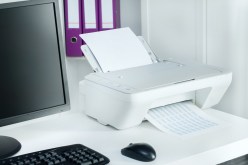How a Card Reader Can Improve Payment Efficiency for Your Business
In today’s digital age, cash transactions are becoming less prevalent, and businesses are increasingly relying on card payments. Whether you own a small retail store or run a bustling restaurant, having a reliable card reader is essential for improving payment efficiency. In this article, we will explore the benefits of using a card reader for your business and how it can streamline your payment processes.
Convenience and Accessibility
One of the primary reasons why businesses opt for card readers is the convenience they offer to both customers and merchants. With a card reader in place, you can accept payments from various debit and credit cards, making it easier for customers to complete transactions. Gone are the days when customers had to carry cash or write checks; now they can simply swipe or insert their cards into the reader.
Moreover, card readers provide accessibility by allowing businesses to accept payments on-the-go. Whether you’re attending a trade show or delivering products to customers’ homes, you can securely process payments using a portable card reader. This convenience not only enhances customer satisfaction but also increases sales opportunities for your business.
Faster Transactions
Efficiency is key in any business operation, and that includes processing payments. A traditional payment method like cash requires counting bills and providing change, which can be time-consuming during peak hours. On the other hand, using a card reader enables faster transactions as it quickly verifies payment details and completes the transaction within seconds.
Additionally, modern card readers integrate with point-of-sale (POS) systems or mobile apps that allow seamless inventory management and automatic tracking of sales data. This integration eliminates manual data entry errors and reduces human effort required for reconciling accounts at the end of each day.
Enhanced Security
Security is paramount when handling financial transactions in any business setting. Card readers play a vital role in ensuring secure payments by utilizing encryption technology that protects sensitive customer information during transmission. This encryption ensures that data is securely transmitted to the payment processor, reducing the risk of fraud or identity theft.
Furthermore, card readers equipped with chip technology provide an additional layer of security. Chip cards are more difficult to counterfeit compared to traditional magnetic stripe cards. By accepting chip cards, your business demonstrates a commitment to protecting customer data and reduces the liability associated with fraudulent transactions.
Improved Record-Keeping and Analytics
When using a card reader for your business, all transaction details are automatically recorded, providing you with a comprehensive record-keeping system. This feature eliminates the need for manual entry of sales data and minimizes human error. Accurate record-keeping not only simplifies accounting processes but also enables you to generate detailed reports for analysis.
By leveraging the transaction data collected through your card reader, you can gain valuable insights into customer behavior and preferences. Analyzing this information can help you make informed business decisions such as creating targeted marketing campaigns or optimizing inventory management based on popular products.
In conclusion, incorporating a card reader into your business operations can significantly improve payment efficiency. It offers convenience and accessibility for customers while enabling faster transactions and enhancing security measures. Additionally, card readers provide automated record-keeping capabilities and valuable analytics that can drive informed decision-making. Embracing this technology will undoubtedly streamline your payment processes and contribute to the growth of your business in today’s digital landscape.
This text was generated using a large language model, and select text has been reviewed and moderated for purposes such as readability.






